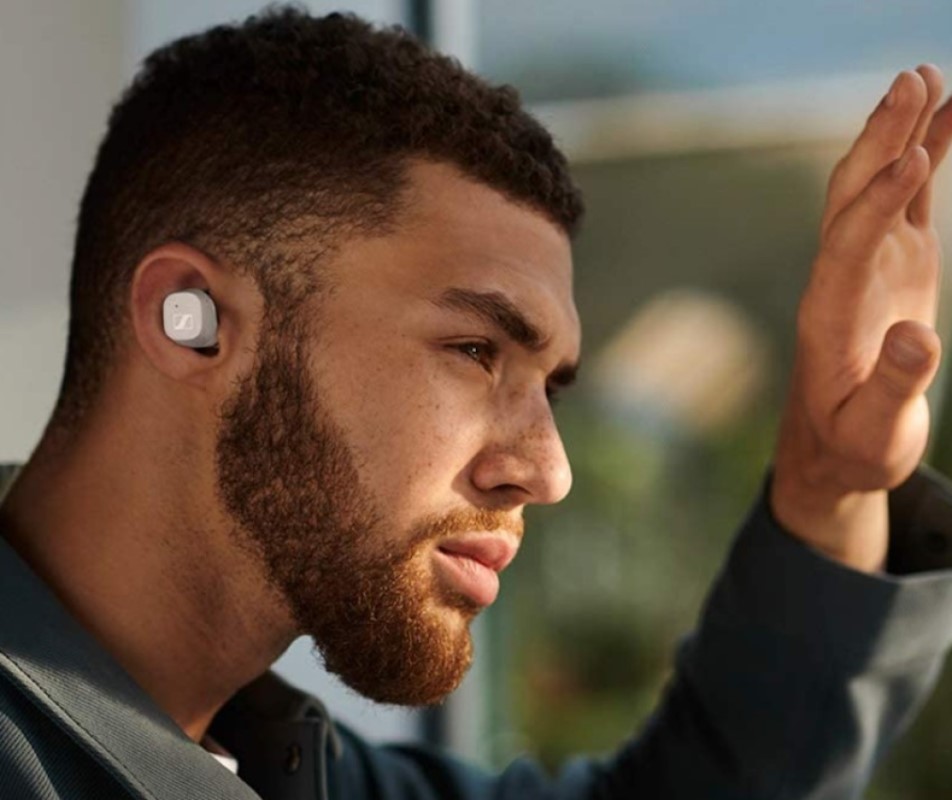Nowadays, the need to listen to music privately in public places is great, so it is essential to buy headphones. You can listen to your favorite songs with the smoothest and most immersive audio experience with this device. So how to choose the right earbuds? There are many factors to consider when choosing to buy a headset. What is that? All will be in our article today.
What are earbuds?
Earbuds are headphones that are usually made of hard plastic, right outside the ear canal. They are different from conventional headphones that have rubber tips and seals in the listener’s ear canal. Also known as “in-ear headphones,” Earbuds are extremely popular among runners, commuters, and teens who want to listen to music discreetly. Earbuds are a less expensive alternative to other listening devices. Consumers tend to buy earbuds because of their convenience, as they are easier to carry around than other types of headphones due to their small size. In-ear headphones usually offer good sound quality and are stylish. easiest, lightest to carry.
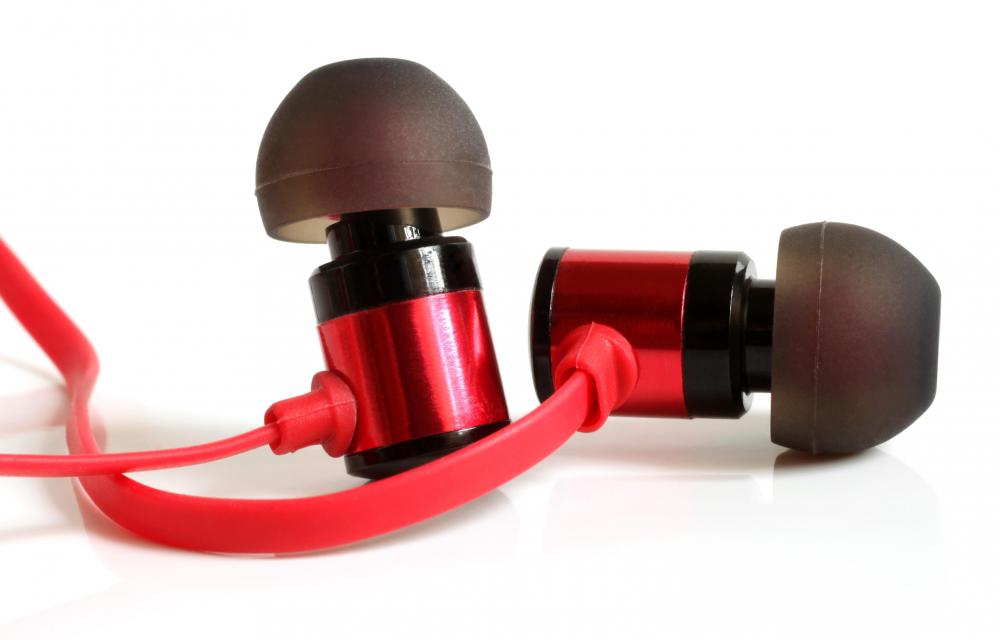
What are the benefits of using earbuds?
Use for many different activities
One major benefit that true wireless headphones have over a traditional pair of headphones is that they can be used easily for a variety of activities. For example, people can use them every day when exercising, watching horror movies in the middle of the night, listening to music during a long lecture, and anything else you can think of. This is due to the innovative, small, compact and flexible design of the earbuds.
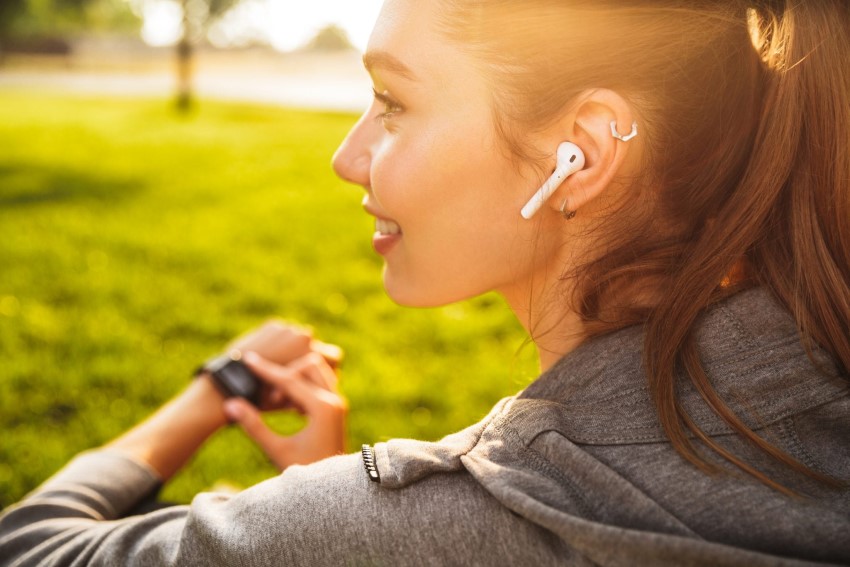
Convenient
As mentioned earlier, one of the main reasons people choose to buy truly wireless headphones is to eliminate the hassle of adjusting the cords, as well as untethering the phone so you can enjoy the listening experience. True wireless is designed for active lifestyles. Since true wireless earbuds as the name suggest don’t have any wires, you won’t accidentally yank them out. Now it’s easier than ever to immerse yourself in sound without worrying about wires getting tangled up in things or having to pause your music, podcasts, or audiobooks when they’re pulled apart multiple times.
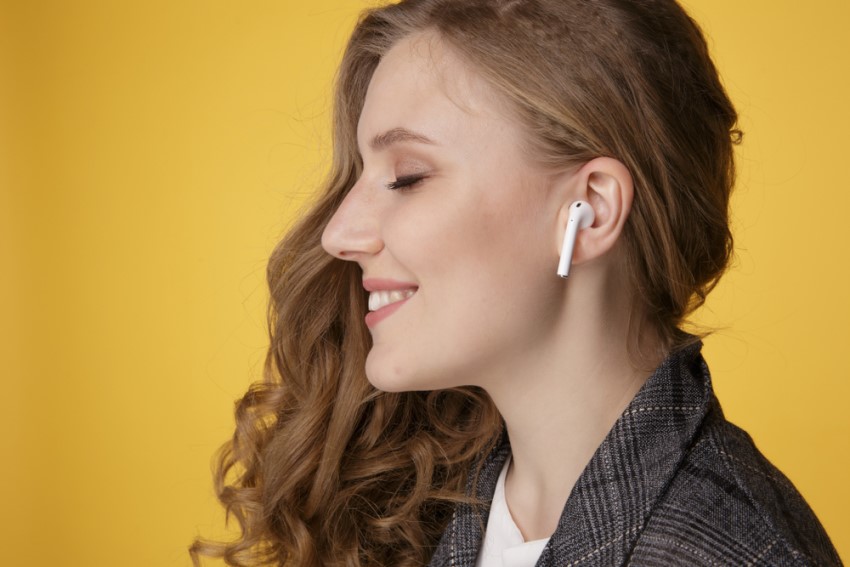
Lots of great features
On the market today, there are many types of earbuds that prioritize creating the best possible sound quality through a number of features and functions. For example, noise cancellation technology, bass enhancement, and an ergonomic design that seamlessly conforms to the shape of your ears mean you can go completely wireless without sacrificing sound quality.
Possibility of pairing
Your wireless headphones can be paired with devices such as phones, tablets, computers, TVs, MP3 players, and more. This means you can listen to your shows on your TV or computer by pairing Bluetooth headphones with these devices. This way, you can enjoy your shows without disturbing others in the room and without having to sit near the device you’re using.
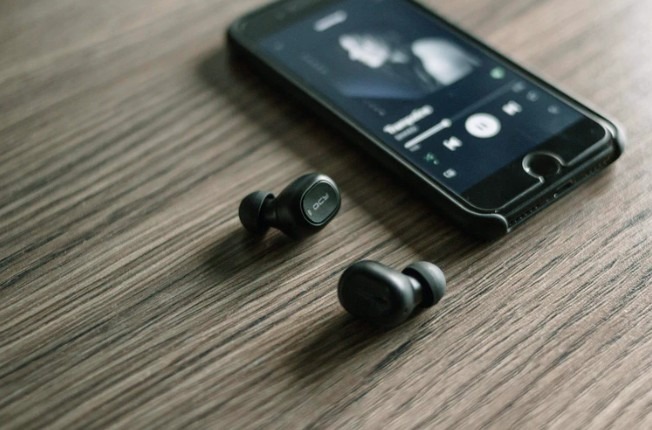
Stylish earbuds
Most of the wireless headphones you can buy today are stylish and sophisticated. There are some that have sporty looks and designs. The headphones will fit snugly in your ears without sticking out too much. This design makes them the perfect accessory for anyone who owns them. Wireless headphones are also built in a way that keeps them steady even when you’re on the go or exercising. And despite their stylish looks, some of them are also affordable.
Diversity of models
You are truly spoiled for choice when it comes to choosing the perfect wireless headphones for your listening device. Some are designed specifically for Apple, while others work seamlessly on Android. So, remember to spend some time researching the market until you find the right headset for you.
How to choose the right earbuds?
How to choose the right earbuds: size
The contact between your ear canal and the headset is the sucker. Because everyone’s ears are different, they fit different sizes. Headphones typically come with at least three sizes of earplugs, although they can come in a variety of sizes and styles, or even come in just one size.
- Single-flange
Single-flange earrings are the most common type of earring and, as the name suggests, they use a single piece of silicone to create the sealing ring. Single-flange headphones vary considerably due to the thickness, density, and form of the material- the denser the material, the higher the noise isolation and richer bass. - Bi-flange
Double-flange earrings have large and small flanges on the same stem and, although they come in a variety of sizes and shapes, they are less of a choice. The advantage of double-flange earrings over single-flange is that they can have two independent areas that can seal to the ear canal, creating a better overall seal. The downside is that there are only a handful of sizes available, and they’re worthless if they don’t fit your ears. - Triple-flange
The three-flange ear tips feel more snug and separate than the other two. Works well with headphones with angled nozzles and over-ear articulation.
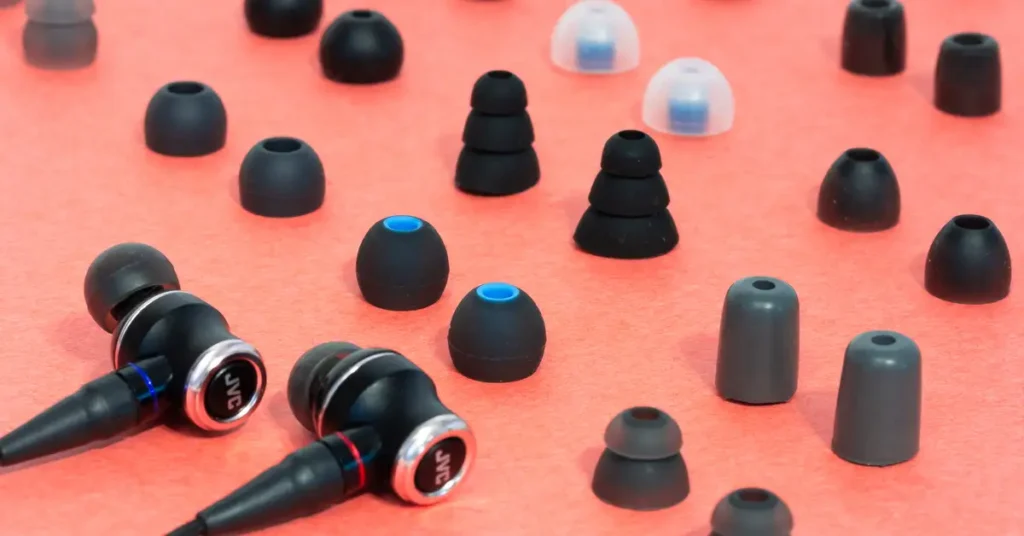
To see which type is best for you, try the following. First, place the headset in your ear with the end connected so that the headset is firmly fixed. To check if the headphones are sealed, try playing a song and listening to it. If not, replace the earbuds with a different size and repeat the process until you find the right one.
How to choose the right earbuds: fit
If you’re new to the world of super-small headphones, you might be wondering how to get the right fit. There’s nothing worse than trying to exercise and your headphones falling out every five seconds. This can lead some people to actually give up on earbuds altogether. So what is the way to choose the right earbuds? When you buy a pair of headphones, they usually come with several different-sized buttons to fit your ears. So try on different sizes to find the best fit.
Also, before you put your headphones on, double-check to make sure you’re wearing each earphone to the correct ear. Also, it can be a bit confusing but it’s true. Clean your earwax regularly as it can mess with your hearing and can also prevent you from wearing properly fitting headphones. Have an ear cleaner or use an at-home earwax kit. After cleaning your ears, you may be surprised at how much better your headphones fit.
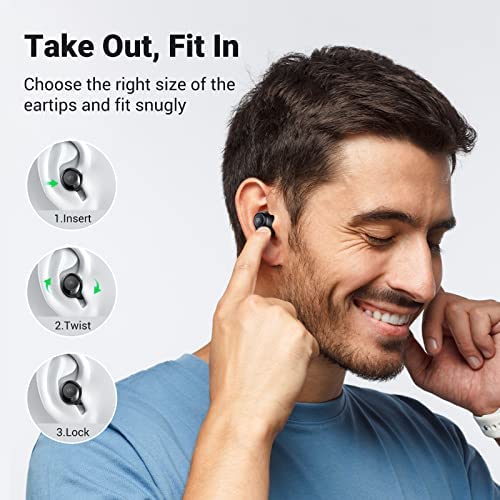
How to choose the right earbuds: type
- Wireless Earbuds
Wireless headphones are connected to other devices via Bluetooth. Instead of wires, there’s usually some sort of wireless receiver that can be connected to your device or something like a Google Home speaker. Wireless headphones don’t require any wires because they rely on radio frequencies! The main advantage of using wireless headphones over wired headphones is their portability, but you need to fully charge the battery before using it. - Wired earbuds
Wired headsets are connected to other devices by wires. They usually come with an audio jack that a headphone cord can plug into, just like your phone or computer speakers. However, the cord easily breaks over time and is difficult to carry to many places. - Standard earbuds
Standard headphones are the type of headphones you’re probably most familiar with. They have a speaker on each side and connect to your device either wired or wirelessly. However, because it is not really in the ear, some people find it uncomfortable to wear for a long time. Also, the music quality may not be the best as they don’t seal the sound and create a lot of background noise.
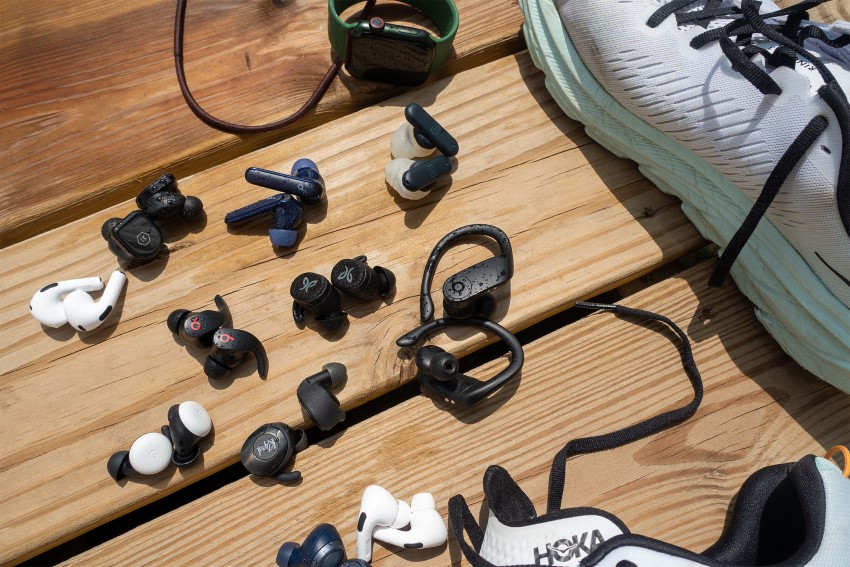
- In-ear earbuds
In-ear headphones usually come with silicone or foam tips that go inside your ear to create a seal. The advantage of in-ear headphones is that it often delivers better sound quality than standard headphones because the speakers are closer together and isolated from outside noise. They need to be held in place according to the shape of your ear canal and may not fit everyone, which can make finding the right ones for you difficult! - Around-ear earbuds
Around-the-ear headphones are similar to in-ear headphones, but they don’t go directly into your ears. Instead, the speakers are placed above them and they go around the ears. The advantage of these is that they are also comfortable for long periods of time and have good sound quality, and you won’t have to worry about them falling out! - Noise-canceling earbuds
Noise-canceling headphones use tiny microphones to pick up any outside noises and then replay those frequencies with polar opposites. This results in those sound waves being canceled so they don’t reach your ears anymore and you’ll just listen to whatever is on your playlist! - Bone Conduction Earbuds
If other types of headphones do not work or cause discomfort to your ears, you may consider using bone-conduction headphones! They have speakers that sit on top of both sides of your skull and use vibrations to send sound waves through them directly into your inner ear. The advantage of these types of headphones is that they won’t block the sound around you and let in background noise just like standard headphones.
How to choose the right earbuds: brand
- Sony
Sony produces a wide range of headphones that have a high sound quality and give users a great experience. With a number of items available in a variety of colors, styles and prices to match, Sony’s greatest achievement is consistent product quality. Sony has introduced a number of unique features to its headset products that make Sony one of the World’s Best Headphone Brands.
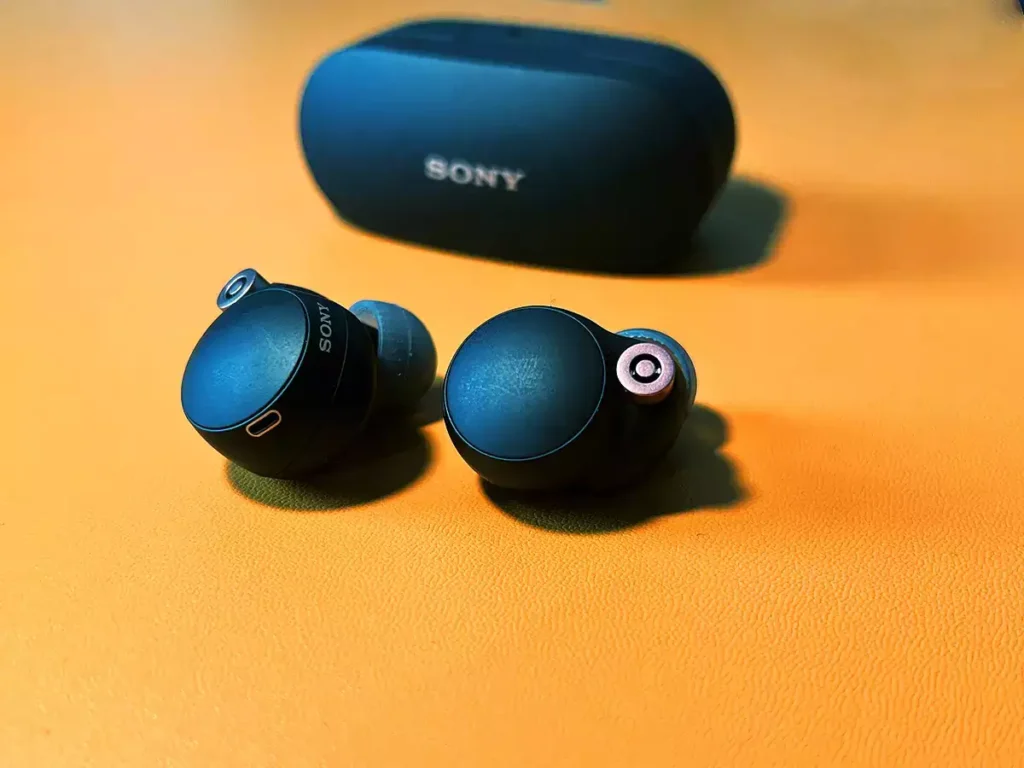
- JBL
JBL is also one of the best headphone manufacturers today. Their headphones have a good sound quality and high quality. They always come up with unique designs for their products as well as offer a wide range of products at reasonable prices. - Sennheiser
The German brand Sennheiser is one of the first names that come to mind when talking about audio equipment. Sennheiser makes some of the best headphones, ear cups, microphones, and monitors. Its premium headphones are used in professional environments around the world, while consumer headphones are loved by listeners worldwide who want great sound. - Jabra
The Danish brand Jabra is one of the popular headphone manufacturers today thanks to its products that sound great but are affordable. Besides good sound quality, Jabra’s designs are feature-rich and easy to use, which is why Jabra is one of the most popular brands among casual music listeners. - Beats
Beats is a famous headphone brand from the US. Beats headphones are the trend of the younger generation thanks to their rich bass sound configuration and stylish designs. Beats also offer high-quality headphones with a comfortable and stylish design. - Panasonic
The world-renowned Japanese multinational company, Panasonic, has been one of the largest manufacturers of electronic equipment since the late 20th century. The brand offers a wide range of products, including headphones, for consumers. Different budgets and needs. The Panasonic headphones have a solid build, good sound quality, and a reasonable price. - Bose
Bose has become a household name for those interested in great sound quality. Bose headphones are among the best in the world and even outperform over-ear headphones from lesser brands in sound quality and overall construction.
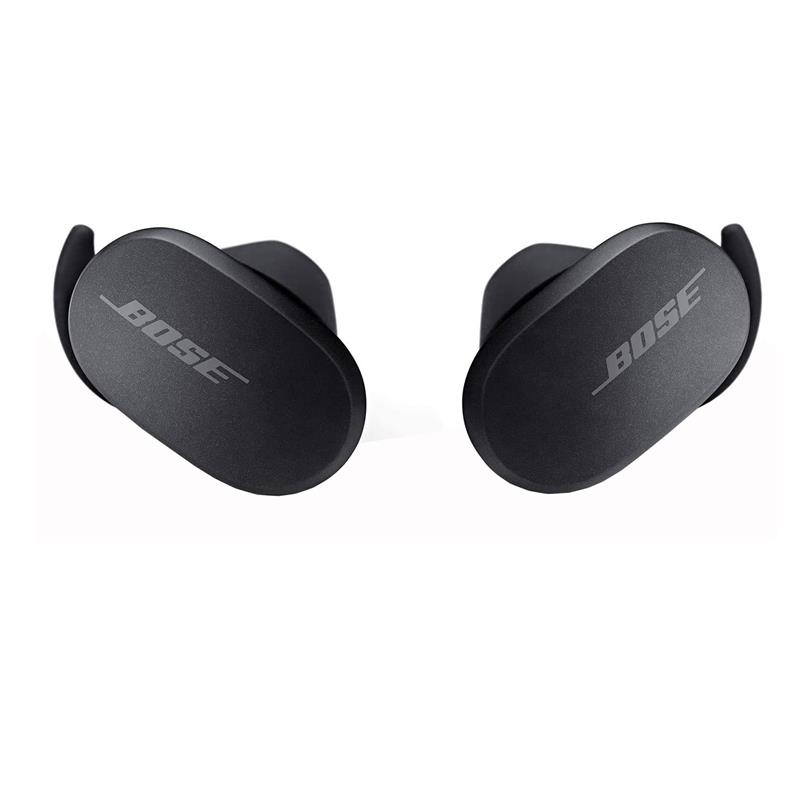
- Skullcandy
Skullcandy is a big name in the field of consumer headphones. Previously, the company specialized in the production of headphones for skiers. Since then, the company has grown to include all consumers, active or not, who are passionate about headphones that sound great and fit at a reasonable price. The brand has made significant efforts to continuously improve technology and sound quality.
How to choose the right earbuds: price
The general factors that determine the selling price of a headset are:
- Parts: The specific parts and number of individual parts of a headset are a big determinant of cost. For example, electrostatic technology is often more expensive than standard electrodynamic designs. Wireless technology often costs more than wired designs, although some high-end cables can also be expensive.
- Materials: The cost of materials is also a factor in the price of headphones. The price difference between an ideal material and a less-than-ideal “good enough” material will vary from department to department.
- Craft/line: Many reputable headphone brands manufacture their headphones in smaller batches or even one by one. This allows extreme attention to detail and expert craftsmanship to help produce consistent and high-quality products. These manufacturing techniques cost much more time (and money) than cheaper types of assembly line manufacturing.
- Testing: High-end headphone products of reputable companies often have to go through harsh tests before reaching customers. Of course, this takes time, energy, and securing more money.
- Brand: While this may sound silly, brand names have value in the audio industry.
Earbuds under $20
At under $20, we’ll generally find a number of cheap, mass-produced and mostly no-name headphones. You can choose to buy this type of headset when traveling. Note that all headsets in this range are based on a basic electromotive/motion coil driver design.
Earbuds from $20-$50
In the $20 to $50 range, we’re starting to see true wireless and wireless earbuds designs. Headphones in this range are pretty good. The highlight of this price point is that some models will offer an official IPX7 rating for water resistance. The “X” in IPX7 means that the headphones haven’t been rated for dust resistance, so taking them to the beach might not be a good idea.
Earbuds from $50-$100
At $50- $100, you can get headphones packed with features like Active Noise Cancellation and transparency mode. You can expect better sound quality with bass that doesn’t overwhelm the mids and highs, but this will vary depending on how different audio brands tune their headphones. At this price point, you can also expect multi-point connectivity, meaning you can connect the earbuds to your phone and laptop at the same time to switch between the two seamlessly.
Earbuds from $100-$200
$200 or less should get most people what they need in a simple pair of headphones. Most headphones with active noise cancellation are pretty effective in this range. You will find that many reputable brands have products in this price range.
Earbuds from $200-$500
The $200- $500 range is where the bulk of the headphones you’d expect include electrostatic options. For this price, you’ll get the best of the best options. High-end dynamic headphones (both wired and wireless) are plentiful. Many of the balanced armature headphones in this range are also pro-quality for live monitoring. For studio pro and audio enthusiast options, there are definitely “budget-friendly” headphones worth considering under $500.
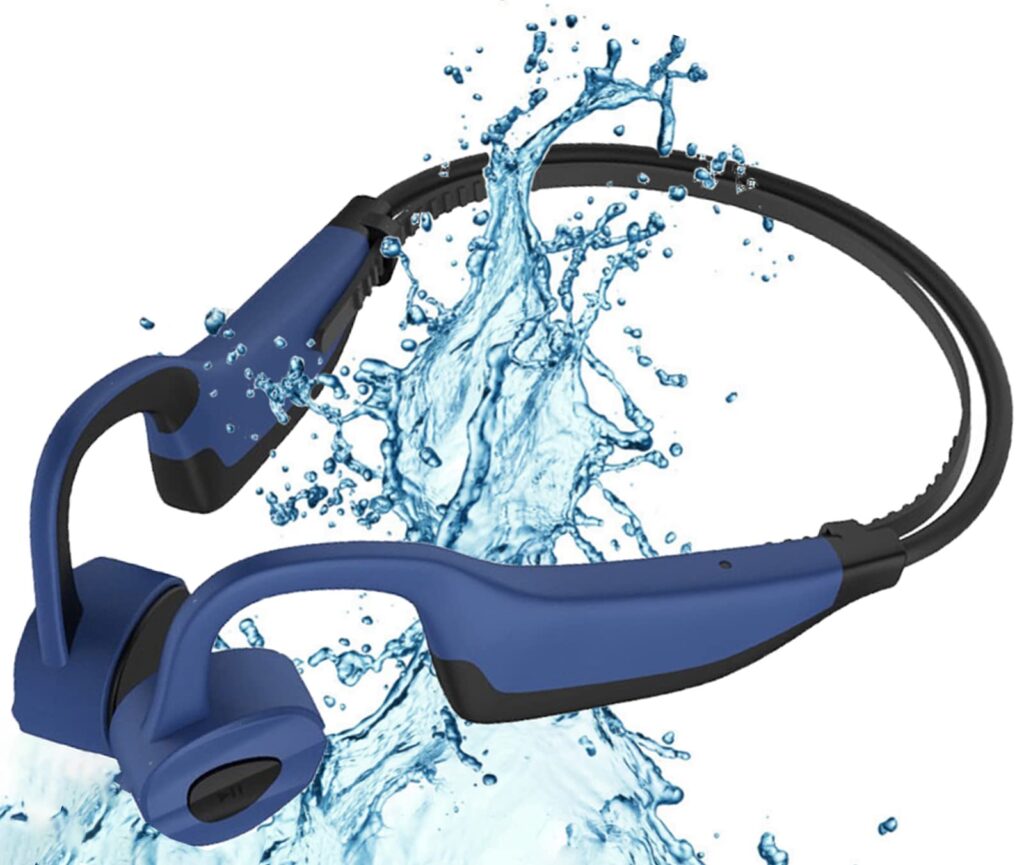
Earbuds from $500-$1000
In the $500- $1,000 range, we can expect a certain quality of design, manufacturing, and performance from a pair of headphones. Most listening needs can be met with headphones in this price range. Flat electrostatic and magnetic headphones, which are more expensive and arguably superior to dynamic headphones, are also quite popular in this price range.
Earbuds from $1000-$5000
If you really want to get the best audio results out of a pair of headphones or earbuds, the designs in this range are well worth considering. While there are certainly more expensive options on the market, you’ll likely find the perfect headset for every situation in this price range.
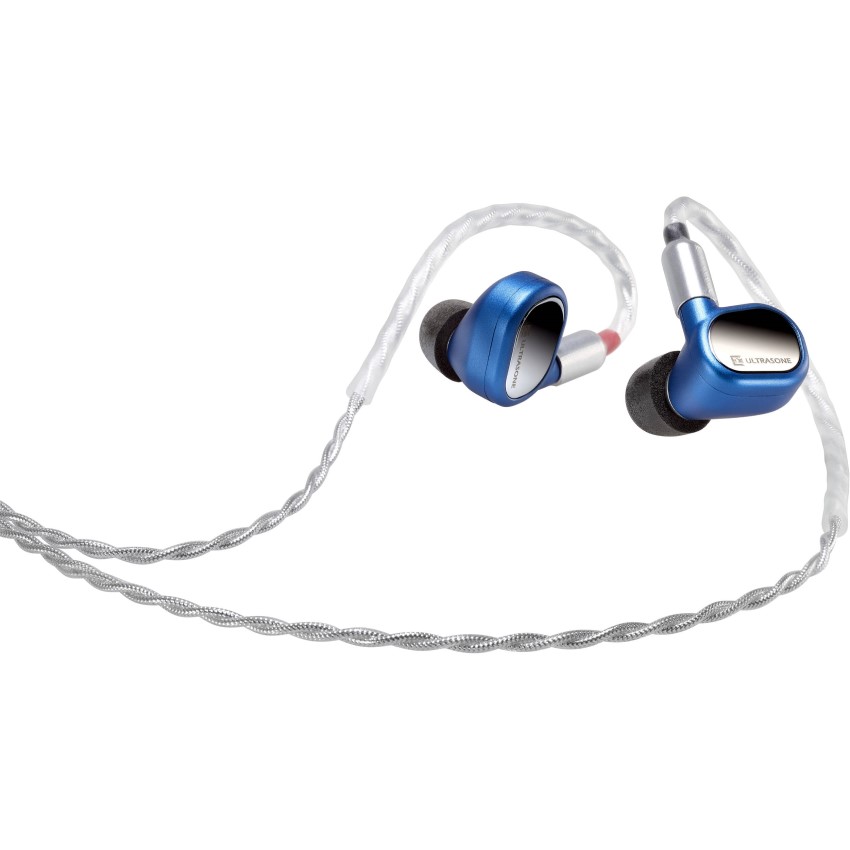
Earbuds over $5000
It’s usually not necessary to spend that much on a pair of headphones. However, professional (and audio-enthusiastic entertainment) situations may call for higher-pitched devices in this price range. Most headphones in this price range are limited in production with precision and attention to detail. They will then be rigorously tested and refined before being released to the market. This ensures a high standard of quality and consistency across all headphones of a particular model. In addition, it also guarantees excellent customer support and warranty.
How to choose the right earbuds: quality
Some technical features that determine the quality of headphones can be mentioned as follows:
Headphone driver
This is a very important, if not one of the most important aspect when choosing a headset. The driver of the headset is the element that transmits electrical/acoustic signals and converts them into audible sound waves for the listener. It is often assumed that the larger the diameter of the driver, the better the sound quality produced. This is especially important for bass.
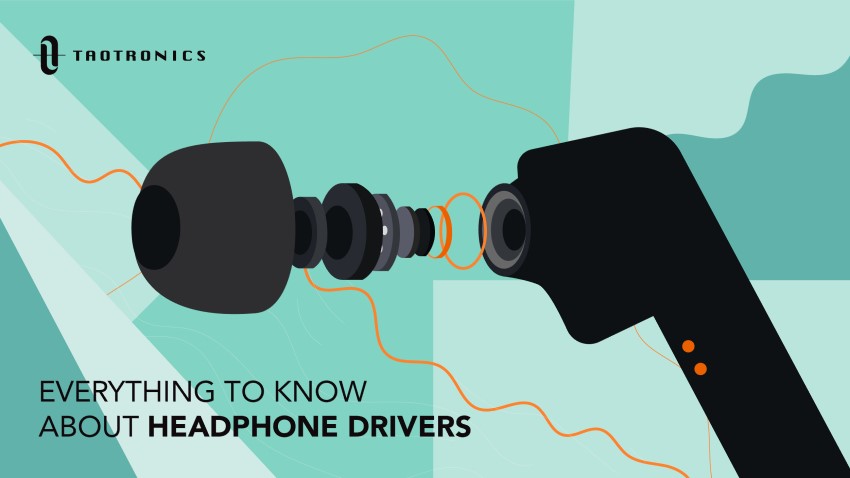
Sensitivity
Ideally, headphones are made with good sound sensitivity. Sensitivity is simply understood as the ability of the headset to detect sound even with the slightest change. Headphone sensitivity is important because it helps to understand how volume and volume controls affect voltage.
Impedance
Most headphones work on electromagnetics. So it’s important to understand how resistance (or impedance) affects sound quality and the type of headphones you’re about to buy. High-end and high-end headphones have a higher impedance (at least 300 Ohms) and require an amplifier to power them. In contrast, headsets for mobile devices have a relatively low impedance (40 ohms or less) and require less power. For this reason, background hissing or crunching may be heard when low-impedance headphones are used. This can lead to performance issues, so impedance is important as poor matching can degrade your experience.
Frequency response
Frequency response indicates the range of audio frequencies that the headset can reproduce. It is measured in Hertz, with the lowest number representing the highest amount of bass and treble. Most headphones have a stated frequency response between 20-20,000Hz, which is suitable for human hearing. If you want a lot of basses, then you should look for headphones that support low bass frequencies.
Total harmonic distortion (THD)
Total harmonic distortion (THD) indicates the amount of sound distortion that can occur when using headphones at high volumes. As we have seen, the headphones produce sound through the vibrating diaphragm in the driver. At high volumes, the diaphragm may not vibrate fast enough, resulting in distortion. THD is usually expressed as a percentage. The lower the THD, the better the headphone quality. Most headphones have a THD of 1% or even lower for high-end products.
Noise Cancellation
The noise-canceling feature of the headphones means that they record ambient noise then create an inverse sound wave and transmit it back into the headphones to effectively cancel out the sound. The sound is effectively silenced by this feedback. Noise cancellation is very effective for low frequencies, less effective for mid frequencies, and ineffective for high frequencies.
Noise Isolation
Noise-isolating headphones block outside sound for full-ear headphones. Noise isolation is not limited to frequency and does not require an external power supply. It is inactive and can be
How to clean your earbuds?
If you use your headphones every day, you should at least use an alcohol wipe to clean them once a week. This is the easiest way to clean your headphones, and this will help remove wax, dirt, and build-up. A thorough cleaning should be done monthly or more often if you use them in hot weather or when exercising causes your ears to sweat a lot.
Before you begin, never hold the headphones under running water or immerse them in water or other liquid for even a second. Doing so will damage the wiring. Always disconnect them from any equipment before cleaning. If you have silicone, foam or earmuffs on your headphones, remove them. Mix a solution of one part dishwashing liquid and five parts warm water in a small bowl. Put them in the cleaning solution and soak them for at least 30 minutes. After soaking, use a cotton swab dipped in the soap mixture to clean. Rinse the tips and let them dry naturally for a few hours or overnight. Do not put them back into the headphones until they are completely dry.
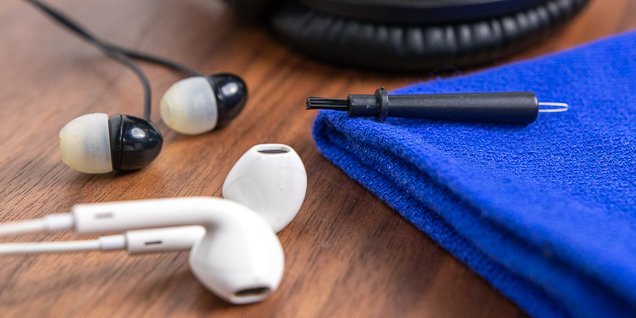
Now clean the mesh cover of the Earbuds. Use a dry toothbrush to gently brush and clean visible dirt off the headset’s mesh screen. Hold the earpads with the mesh side facing down so any particles fall out instead of getting deeper into the earpads. Next, lightly moisten a cotton swab with isopropyl alcohol and wipe the bud net to disinfect and remove any residual residue. Don’t soak cotton swabs with too much alcohol or you don’t want moisture to drip onto the inside of the headphones.
Finally, dip the microfiber cloth in isopropyl alcohol and wipe the outer rubber surfaces of the headset. This will clean and disinfect the surface. Lint-free microfiber won’t leave fibers in the mesh. Prepackaged alcohol wipes are another option. If your earbuds are wired, clean the cord with an alcohol wipe or microfiber cloth dipped in alcohol. After cleaning all components, allow the headphones to air dry for at least 15 minutes while keeping them away from direct heat before using or putting them back in the box. Useless appliances like fans and hair dryers can blow lint back into the mesh screen.
Tips to keep your Earbuds clean longer
- When not in use, put the headset in the carrying case. Avoid putting your headphones in your pocket, backpack or shirt as they will collect lint and debris.
- When you clean the headphones, clean the carrying case by wiping the inside with a microfiber cloth dipped in a little rubbing alcohol. This is especially important for the wireless charging case.
- Even if your earbuds are waterproof, you shouldn’t leave them wet for long periods of time because moisture can penetrate the active components inside. Allow the headphones to dry naturally away from direct heat.
- Don’t stick your headphones in places like sweaty shirts and pants, as they’ll be exposed to too much moisture and bacteria here.
How to care for your earbuds?
Headphones can last for years, but the exact length of time depends on your lifestyle and habits as well as the build quality of the headphones themselves. Here are some things to keep in mind when using and maintaining your headphones to help them last:
Store it properly
Properly storing headphones helps prolong their life. That’s why all headphones come with a carrying case or pouch. Instead of wrapping the cable around your device or bundling it, disconnect the headset from your device and wind it up using the “over” or “underside” method. Once the cable is properly coiled, place your headphones and cable in a bag or carrying case. Many headphone problems are the result of cable failure caused by stretching or tearing. Cables are one of the most important parts of a headset, and also one of the most easily damaged.
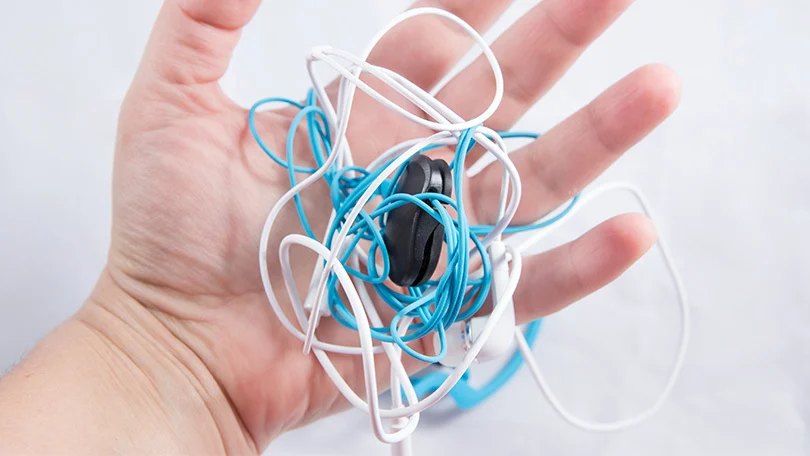
Replace sleeves
Headphones are designed to last for years, but the foam, rubber, or silicone padding will still degrade over time. This can result in the headset losing its ability to block background noise, resulting in a loss of overall sound quality. Some people may choose to replace the headset as well, but you can replace the sleeves. Replacement sleeves can be ordered from most high-quality headphone manufacturers.
Battery maintenance
You should never drain your headset’s battery. Given how lithium-ion batteries are designed and operated, this does more harm than good and causes unnecessary stress. Instead of waiting for your headphones to run out of battery, replace them regularly. Also, avoid plugging it in after it’s fully charged because that’s not good for the battery either. If you don’t use your headphones often, you should store them with at least 50% battery life. This extends the life of lithium-based batteries. Likewise, do not store them in extremely hot or cold temperatures as it will result in loss of capacity.
Clean your headphones
Both the environment outside where you use the headphones and the environment inside your ears contain dirt that can get into the moving parts of the headset and affect sound quality. Clean them diligently before they can build up and cause any damage. Remove the rubber earpads and wipe clean with a damp cloth. Then, use a toothpick dipped in water to remove all wax, dead skin cells, and dust in the inner areas of the headset. Also, gently clean through the cords if it has accumulated dust.
Keep headphones away from moisture
Everyone knows that humidity and electronics shouldn’t come into contact with each other, but many people still make mistakes in this regard. Headphones should not be worn during heavy rain, as water can get inside and damage electronic components. Moisture from changing weather conditions can corrode the outer layer of the headset.
Avoid dropping
Like any other device, any shock or pressure can have an adverse effect on your headphones. The driver contains fragile moving parts that can break when accidentally dropped or carelessly thrown on a hard table.
Volume control
Sometimes you want to listen to music at a really loud volume to block out any outside noise. But that won’t be good for both your ears and headphones in the long run. If you start to notice distortion or a rattling sound, the driver may have worn out. The small headphone drivers are similar to the full-sized speaker drivers in the way they respond to extreme volume levels.
If you constantly push them to the limit, the sound quality may deteriorate. Listening at a lower volume also protects your hearing. Your ears are very sensitive to sound pressure, and you can permanently damage your hearing if the volume is too loud.
Conclusion
Technology has opened the door to all forms of personal entertainment, including the ability to listen to music or engage in a conversation from tiny devices inserted into the ear. Earbuds are one such device. The earbuds are a reliable, pocket-sized duo that’ll follow you everywhere- the gym, on the plane, in your office, or in the back of an Uber. Today’s article we have explained what Earbuds are, the benefits they bring, how to choose the right earbuds, how to clean and how to properly store the headphones. Taking care of your headphones will help extend the life of your headphones and optimize performance to enjoy your music and podcasts to the fullest.
Read more:

